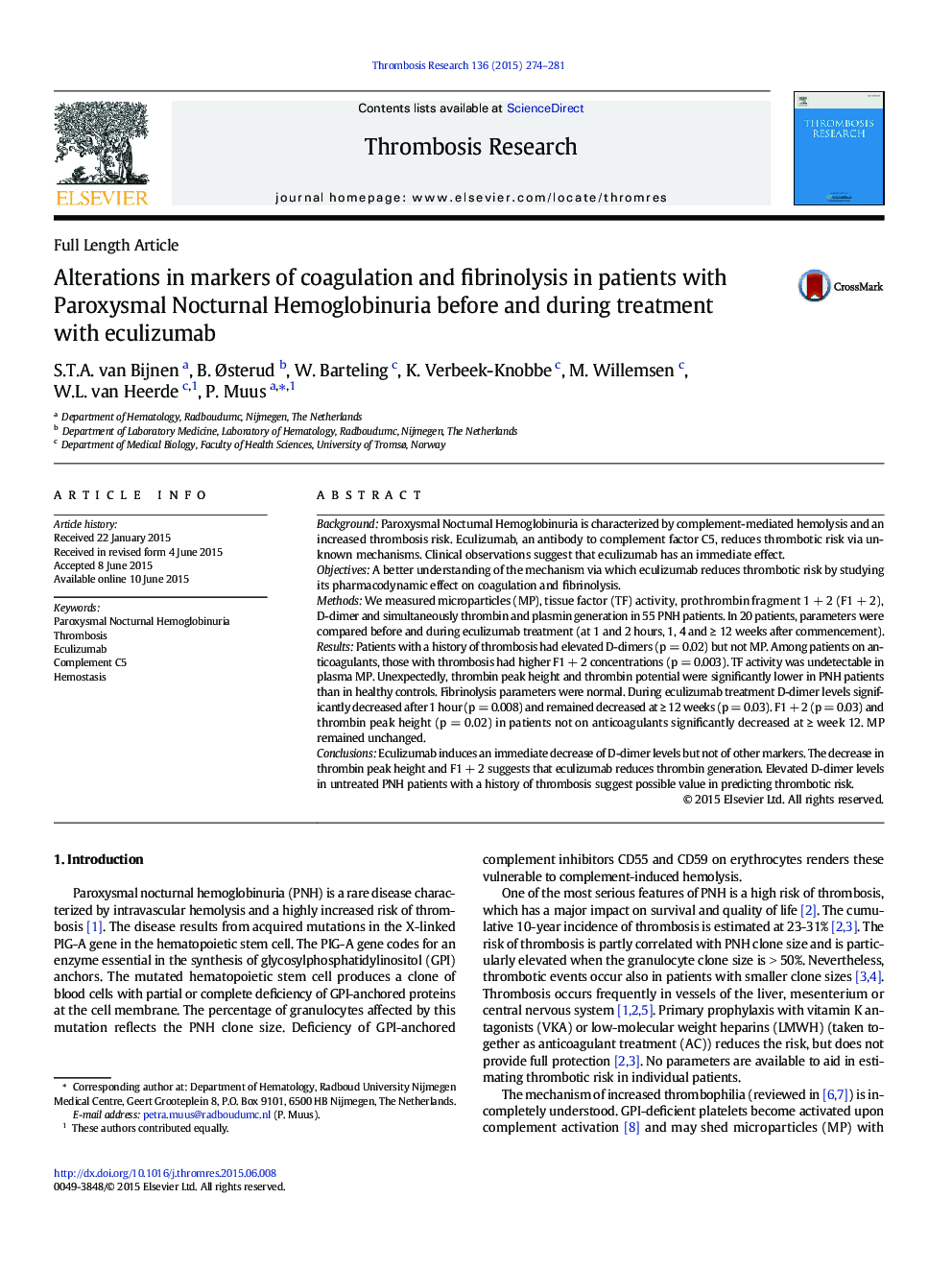| کد مقاله | کد نشریه | سال انتشار | مقاله انگلیسی | نسخه تمام متن |
|---|---|---|---|---|
| 6001292 | 1182948 | 2015 | 8 صفحه PDF | دانلود رایگان |
- Eculizumab treatment induces a rapid and sustained decrease of D-dimer levels.
- PNH patients have lower thrombin peak height and thrombin potential.
- No evidence for TF activity or abnormalities in fibrinolysis in PNH patients.
- PNH patients with a history of thrombosis have elevated D-dimer and F1Â +Â 2 levels.
BackgroundParoxysmal Nocturnal Hemoglobinuria is characterized by complement-mediated hemolysis and an increased thrombosis risk. Eculizumab, an antibody to complement factor C5, reduces thrombotic risk via unknown mechanisms. Clinical observations suggest that eculizumab has an immediate effect.ObjectivesA better understanding of the mechanism via which eculizumab reduces thrombotic risk by studying its pharmacodynamic effect on coagulation and fibrinolysis.MethodsWe measured microparticles (MP), tissue factor (TF) activity, prothrombin fragment 1 + 2 (F1 + 2), D-dimer and simultaneously thrombin and plasmin generation in 55 PNH patients. In 20 patients, parameters were compared before and during eculizumab treatment (at 1 and 2 hours, 1, 4 and â¥Â 12 weeks after commencement).ResultsPatients with a history of thrombosis had elevated D-dimers (p = 0.02) but not MP. Among patients on anticoagulants, those with thrombosis had higher F1 + 2 concentrations (p = 0.003). TF activity was undetectable in plasma MP. Unexpectedly, thrombin peak height and thrombin potential were significantly lower in PNH patients than in healthy controls. Fibrinolysis parameters were normal. During eculizumab treatment D-dimer levels significantly decreased after 1 hour (p = 0.008) and remained decreased at â¥Â 12 weeks (p = 0.03). F1 + 2 (p = 0.03) and thrombin peak height (p = 0.02) in patients not on anticoagulants significantly decreased at â¥Â week 12. MP remained unchanged.ConclusionsEculizumab induces an immediate decrease of D-dimer levels but not of other markers. The decrease in thrombin peak height and F1 + 2 suggests that eculizumab reduces thrombin generation. Elevated D-dimer levels in untreated PNH patients with a history of thrombosis suggest possible value in predicting thrombotic risk.
Journal: Thrombosis Research - Volume 136, Issue 2, August 2015, Pages 274-281
